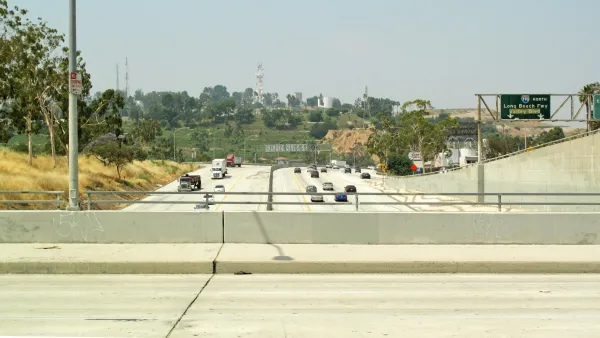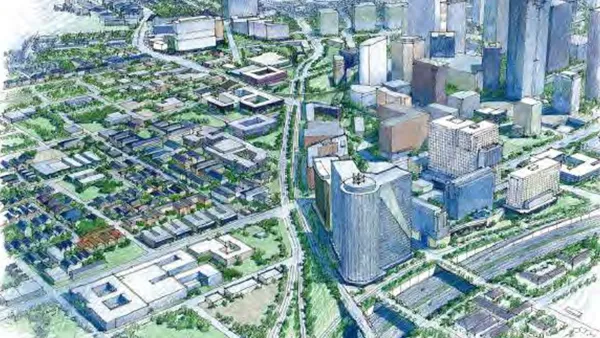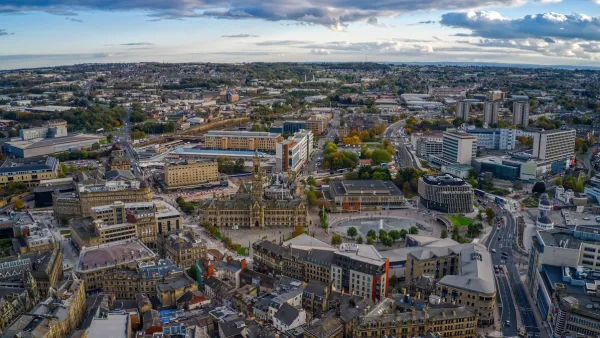Ben Welle discusses the benefits of freeway removal programs both at home and abroad, and explores what cities have done to fill the void they leave behind.
As cities across the globe confront the question of how to serve a growing population, the outright demolition of existing freeways seems a counterintuitive, backward step. But a report released last month demonstrates otherwise, highlighting freeway removal projects in five major cities (Portland, San Francisco, Milwaukee, Seoul, and Bogotá). Published by sustainable transportation groups EMBARQ and the Institute for Transportation and Development Policy, the report underscores the benefits that freeway removal confers to the public – provided something is done to compensate for the lost infrastructure.
"Freeway removal is really about shifting priorities from moving cars to moving people," Welle writes, pointing to improvements in public health. When Portland did away with the Harbor Drive Expressway, for example, it restored public access to the adjoining Willamette River with the creation of the Tom McCall Waterfront Park. "The park now has roughly 1.6 million users per year, with people running, biking, walking their dogs, playing Frisbee, and attending major events and the park's Saturday market."
By replacing freeways with green space, cities can also mitigate heat islands and improve air quality. The elimination of the Cheonggyecheon Expressway in Seoul "led to a reduction of the heat island effect by as much as 8 degrees Celsius, according to summertime measurements in comparison to nearby paved roadway conditions," while the concentration of certain nearby air pollutants fell by as much as one-fifth.
But in order for freeway removal to work, cities must implement measures to restore the capacity of the transportation network. Officials in Seoul did so by beefing up the reach and efficiency of transit, expanding bus-only lanes and better integrating bus and subway service. Notably, as transit service improved, traffic accidents fell by one-third. "The number of vehicles passing through downtown decreased 9 percent after a bus rapid transit (BRT) system and aggressive Transportation Demand Management (TDM) measures were implemented as part of the project," Welle adds.
FULL STORY: Freeway Removal Creates Opportunity for Improved Health, Quality of Life

Analysis: Cybertruck Fatality Rate Far Exceeds That of Ford Pinto
The Tesla Cybertruck was recalled seven times last year.

National Parks Layoffs Will Cause Communities to Lose Billions
Thousands of essential park workers were laid off this week, just before the busy spring break season.

Retro-silient?: America’s First “Eco-burb,” The Woodlands Turns 50
A master-planned community north of Houston offers lessons on green infrastructure and resilient design, but falls short of its founder’s lofty affordability and walkability goals.

Test News Post 1
This is a summary

Analysis: Cybertruck Fatality Rate Far Exceeds That of Ford Pinto
The Tesla Cybertruck was recalled seven times last year.

Test News Headline 46
Test for the image on the front page.
Urban Design for Planners 1: Software Tools
This six-course series explores essential urban design concepts using open source software and equips planners with the tools they need to participate fully in the urban design process.
Planning for Universal Design
Learn the tools for implementing Universal Design in planning regulations.
EMC Planning Group, Inc.
Planetizen
Planetizen
Mpact (formerly Rail~Volution)
Great Falls Development Authority, Inc.
HUDs Office of Policy Development and Research
NYU Wagner Graduate School of Public Service




























